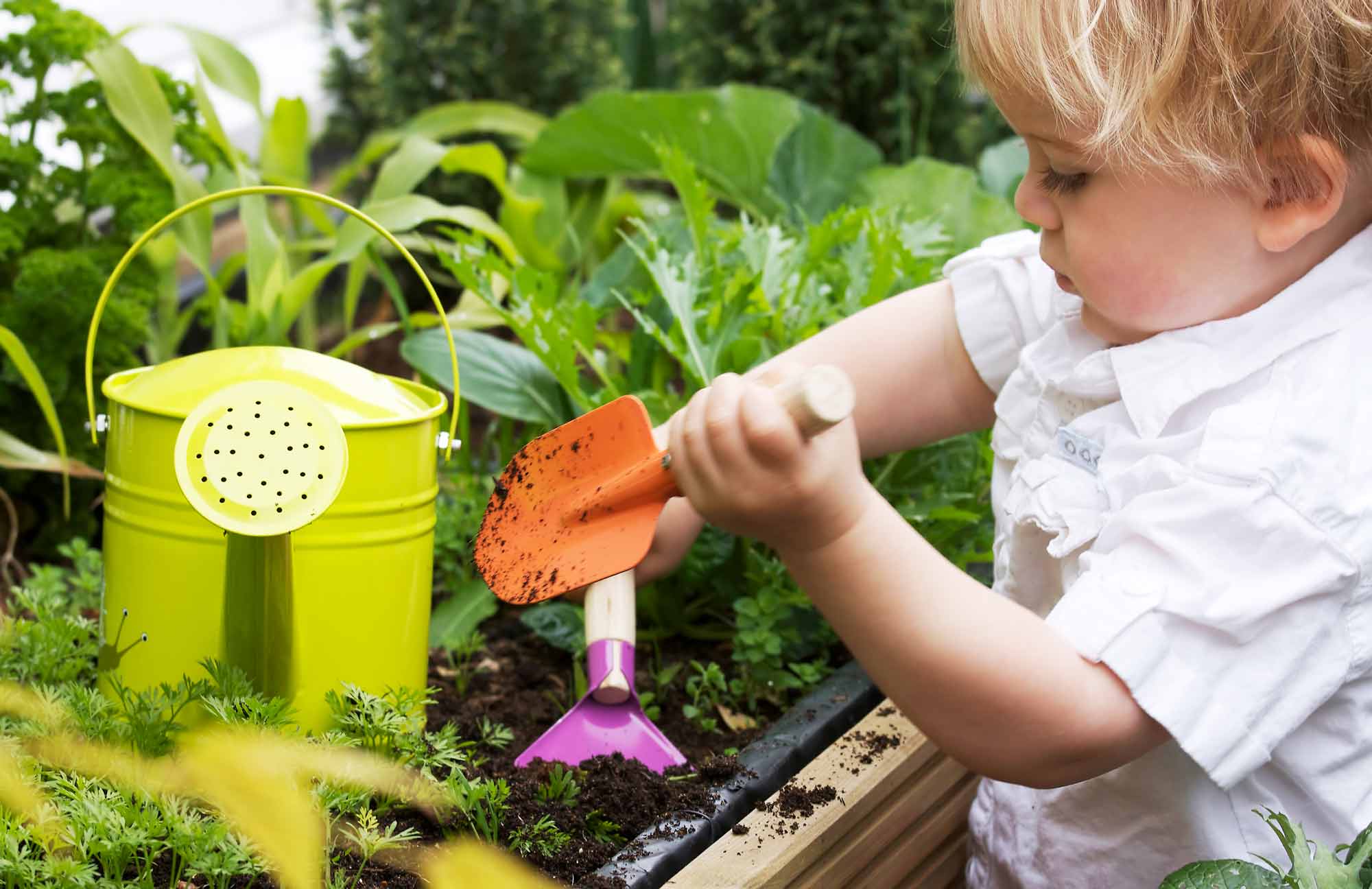Classroom Garden
In this lesson, children will plant an indoor classroom garden and make observations over time.
Content Area:
Growth and Change
Learning Goals:
This lesson will help toddlers and preschoolers meet the following educational standards:
- Understand that living things grow and change
- Understand that living things rely on the environment and/or others to live and grow
Learning Targets:
After this lesson, toddlers and preschoolers should be more proficient at:
- Observing, investigating, describing and categorizing living things
- Showing an awareness of changes that occur in oneself and the environment
- Showing respect for living things
- Describing and comparing the basic needs of living things

Classroom Garden
Lesson plan for toddlers/preschoolers
Step 1: Gather materials.
- Seeds or seedlings
- Dirt
- Pots
- Gardening tools
- Watering can
- Chart paper
Note: Small parts pose a choking hazard and are not appropriate for children age five or under. Be sure to choose lesson materials that meet safety requirements.
Step 2: Introduce activity.
- Explain that we will be creating a classroom garden.
- Invite the children to suggest types of plants that we might include in our classroom garden (vegetables, herbs, flowers, etc.)
- On a piece of chart paper, document the types of plants to include in the classroom garden.
Step 3: Engage children in lesson activities.
- Separate the children into small groups and invite them to plant seeds or seedlings in pots, using potting soil and gardening tools.
- While planting, discuss where the pots should be placed in the classroom so that the plants will grow, highlighting the fact that plants need sunlight to grow.
- After the seeds/seedlings have been planted, place the pots in a sunny spot and wait! Note that this is a long-term activity.
- Create a classroom job for children to water the plants. Consider an appropriate name for this job that is specific, such as gardener or horticulturist. Highlight the fact that plants need water to continue to grow.
- On a weekly basis, discuss changes that have occurred to the plants over the past week.
- During these weekly conversations, document the children’s thoughts and ideas on a piece of chart paper labeled with the current week since planting (e.g. Week 1, Week 2, etc.).
- Continue observing and discussing on a weekly basis as the plants continue to grow.
Step 4: Vocabulary.
- Observe: To watch with the purpose of identifying changes or behaviors
- Document: To write down observations that can be used to identify changes or similarities over time
- Growth: How a living thing develops over time
- Basic needs: What a living thing needs to grow and survive
Step 5: Adapt lesson for toddlers or preschoolers.
Adapt Lesson for Toddlers
Toddlers may:
- Be interested in the sensory activity of planting with dirt
- Describe plants with simple sentences
- Be supported with repeated exposure to similar experiences
Child care providers may:
- Use dirt and gardening tools (or plastic spoons and forks) in a sensory table, and make this activity available throughout the garden exploration
- Label plant vocabulary as they plant with toddlers
- Provide repeated opportunities to plant seeds/seedlings to add to the classroom garden over time
Adapt Lesson for Preschoolers
Preschoolers may:
- Have everyday connections to gardens that they can describe and share
- Be interested in what we use plants for
- Make observations based on size, height or number of leaves
Child care providers may:
- Invite the children to document mathematical language related to plant observations
- Extend the garden to an outdoor space to allow the children to make connections to other outdoor plants
- Incorporate any edible plants into cooking activities to make connections to the purpose of certain plants
Suggested Books
- Planting a Rainbow by Lois Ehlert
- The Carrot Seed by Ruth Krauss
- The Tiny Seed by Eric Carle
Music and Movement
- Act out a seed sprouting, growing into a plant and reaching toward the sun
- The Farmer Plants the Seeds
Outdoor Connections
- Explore the neighborhood to scout out the plants that grow there
- Visit a plant nursery or a community garden
Comment on this lesson